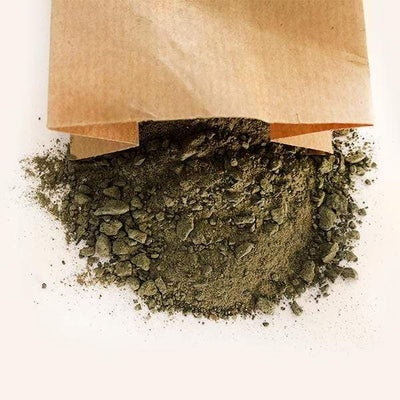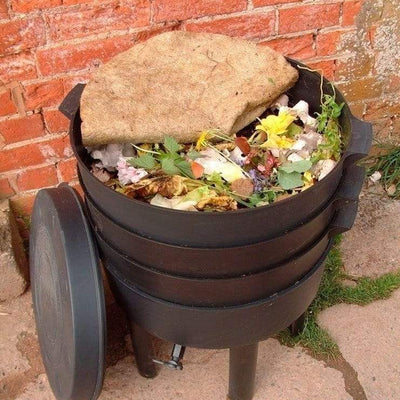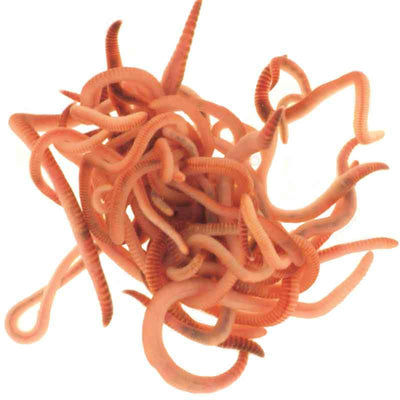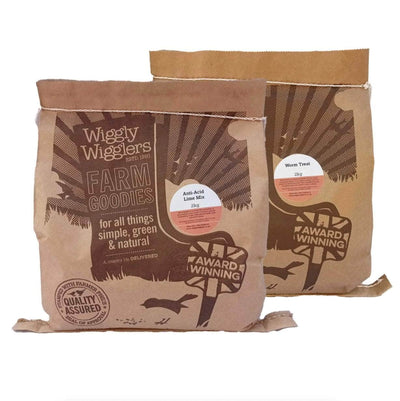Your Guide to Composting, Worm Power, and Regenerative Soil Health - Order your kit here https://www.wigglywigglers.co.uk/products/wiggly-soilbuilder-wormery-the-inground-compost-soil-health-system
🥕 How much kitchen waste will this system handle?
The Wiggly SoilBuilder Wormery™ is designed to process small amounts of kitchen waste regularly, making it ideal for a one- to two-person household. Unlike a traditional compost bin, you're not loading it up – you’re feeding the worms. Think of it as a live, in-ground compost system where worms convert waste into fertility, bit by bit. Scraps like veg peelings, coffee grounds, and tea bags go in little and often – and the worms will thank you for it!
🐛 How far will the worms travel from the in-ground wormery?
Composting worms (Dendrobaena veneta, Eisenia andrei) tend to stay near the food source but will spread out into the topsoil around the wormery, typically around a metre in all directions. Garden worms (Lumbricus terrestris) will create deep vertical tunnels that help carry nutrients down into the soil profile, which benefits plant roots far beyond the surface. Combined, they transform the soil zone around your wormery into a living, regenerative garden bed.
🌱 Why is worm cast better than ordinary soil?
Worm castings (vermicompost) are a supercharged version of natural soil. They contain:
-
Up to 5 times more nitrogen than average topsoil.
-
Beneficial microbes that support root health and disease resistance.
-
Naturally balanced pH and slow-release nutrients.
Castings help improve soil structure, moisture retention, and nutrient uptake – making them the perfect compost for vegetables, flowers, and herbs. If you want to boost yields naturally and safely, worm compost is the answer.
📜 What did Charles Darwin discover about worms?

After studying earthworms for over 60 years, Charles Darwin famously wrote:
“It may be doubted whether there are many other animals which have played so important a part in the history of the world, as have these lowly organised creatures.”
He discovered that earthworms are nature’s master composters and soil engineers, constantly recycling organic matter and improving the land. His work laid the foundation for our understanding of natural soil improvement – and it still rings true in regenerative gardening today.
🌿 Why is this a great addition to a traditional compost bin?
Unlike a regular compost bin that sits above ground, the Wiggly SoilBuilder Wormery™ is installed directly in your garden soil, so the composting action happens right where your plants need it. No need to turn heaps or worry about space. It’s compact, odour-free, and perfectly suited to no-dig gardens, raised beds, greenhouse and permaculture plots.
It’s not about producing big volumes of compost – it’s about feeding your soil continuously with small quantities of high-value waste, while the worms do the hard work.
🪱 What types of worms are included, and why?
Each SoilBuilder kit includes:
-
250g of composting worms (Dendrobaena veneta or Eisenia andrei) – expert surface feeders that break down waste into rich castings.
-
50 garden worms (Lumbricus terrestris) – deep burrowers that naturally aerate soil, drain excess water, and deliver nutrients to deeper roots.
This dual-worm system mimics the layers of a natural woodland floor, combining vermicomposting and soil regeneration in one neat simple unit.
🌧️ Can I use this year-round in the UK?

Yes – the in-ground design helps regulate temperature and moisture, making it suitable for British weather. In winter, worm activity may slow down, but they'll stay safe below ground. Keep feeding small amounts and add a bit of shredded paper to help insulate the system.
🌻 Is this a good composting solution for beginners or small gardens?
Absolutely. This is the perfect eco-friendly food waste solution for beginners, urban gardeners, or anyone wanting a simple, mess-free way to try worm composting. It’s also great if you're short on space or want to incorporate regenerative gardening methods into your allotment, raised beds, patio, or flower beds.






